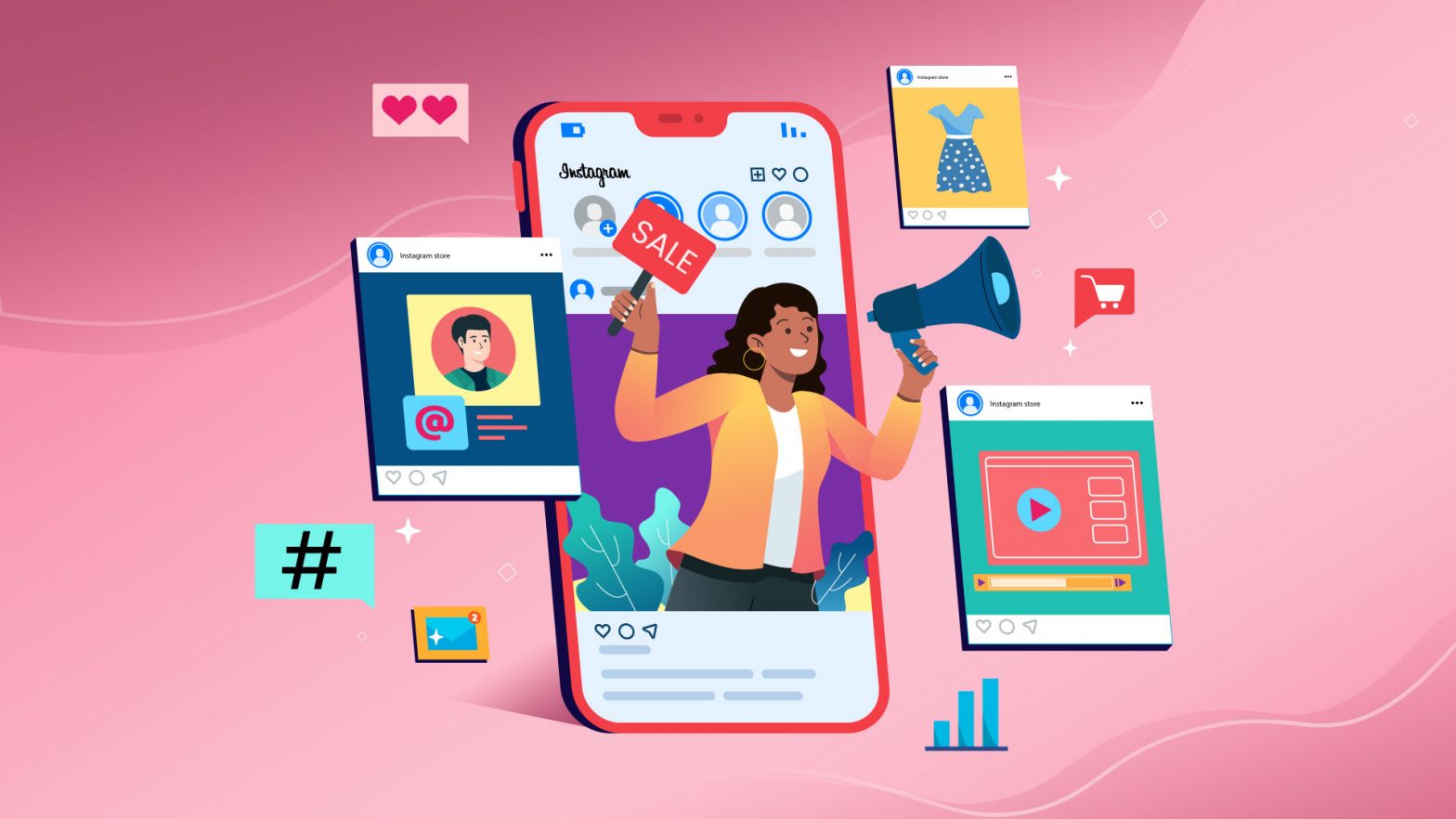Your social media marketing can sometimes feel disconnected from your other marketing activities. After all, isn’t social media supposed to be about interacting with followers and having a little fun with your brand? Is it the place to think about the customer journey?
Potential customers can be moved through the customer journey by using social media marketing
Your whole marketing strategy, including social media, should revolve around the client journey. Yes, it is possible to include social media into each stage of the customer experience without resorting to salesy postings or spammy messaging.
According to a Business.com study, 55% of B2B buyers conduct social media research, and 78% of customers feel that a company’s social media posts influence their purchasing decisions.
Social media is for sure becoming a Wikipedia for your customers, where they can learn about your business from their peers.
We’ll examine stages of the customer journey and how social media might influence them.
Stages of the Customer Journey
The customer journey is frequently referred to as “the digital sales funnel” or a “buying funnel” when firmly focused on sales.
All clients will go through five stages of the customer’s journey, which is the process of creating a relationship with your brand.
These stages are:
Awareness: where a customer discovers your brand for the first time
Consideration: when a customer is thinking about buying from you or one of your competitors but isn’t quite ready to make the purchase
Purchase: time a customer makes a purchase
Loyalty: when customers prefer your brand over that of competitors
Advocacy: when customers recommend you to their relatives and family
Unfortunately, many organizations concentrate all of their efforts on the first three stages of the customer journey. Believing that once the consumer has purchased their fantastic product, they will not need to do any other work.
This is a significant error since the final two stages—loyalty and advocacy—will bring you your most valuable consumers, who will, in many circumstances, refer you to others.
Marketers are increasingly in charge of the customer journey
Applying customer journeys is a part of digital marketing efforts.
When creating a customer journey map for your company, account for each stage, ensuring that social media, user-generated content, and social sharing are good touchpoints for each.
Include social media into the customer journey at every stage
Comprehend
Social networking is a fantastic way to get the word out about your company to new individuals. The first stage of the customer journey is about getting your branded content before your target audience.
You want your potential customers to understand who you are, what you do, and why you’re better than the competition.
The first step to meeting new people on social media is to create a profile that includes all of your information and incorporates your branding and logos. Research some of the best corporate branding examples so you have a sense of what has worked successfully for others.
Organic social begins with posting compelling branded content, whether you’re just getting started or bringing your social page back from the dead.
People will learn about your brand through this content and begin to identify your name with your field of expertise.
Fondness
It’s time to get on the good side of new admirers now that you’ve gotten their attention. You aim to educate them on their issues throughout this phase.
This is the opportunity to demonstrate that you understand their plight. And that your company has the ideal answer to their problem.
Continue to distribute stuff, but make sure it’s relevant! Use this platform to promote in-depth blog entries, explainer videos, and podcast episodes with other experts in your field.
You can also curate information from other sources, but distributing relevant stuff to your audience is the key to getting people to like you.
You can also start promoting your work and distributing paid advertisements. Boosting content allows you to reach a wider audience with your existing organic material.
At the same time, paid campaigns will enable you to show sponsored posts to those who have already interacted with your organic social presence.
In either case, these sponsored choices are a method to improve your visibility on your audience’s social feeds while also cultivating a sense of familiarity that generates liking.
Confidence
You’ve persuaded your audience that you’re an expert in your industry and know what you’re talking about. Now is the time to reaffirm your company’s reliability and boost early engagement.
You may start to pique your audience’s interest with hints to a spectacular deal. You can achieve this by using paid posts with clear calls to action.
You can also take a more natural approach by including links to the first offer on your website.
This is your chance to show off your industry knowledge and make a strong case for your organization.
Strain
This is where you make your first pitch to potential customers. You unveil your offer and deliver content in the trial phase to encourage customers to decide.
Your first offer doesn’t have to be enormous, and it shouldn’t be either. To get your foot in the door with your potential clients, it’s wise to start with something slight.
Again, tailored calls to action in posts and ads are the way to go. Presenting a free trial or making a risk-reducing offer is a beautiful method to encourage prospects to commit to giving you a try.
Purchase
After you’ve enticed your prospects to take advantage of your trial offer and show them a glimpse of your incredible goods or service, they’ll be ready to make their first actual purchase.
Social media can assist them in making this conversion. Here’s where you can improve your client involvement.
If someone who has used your product writes a review or asks a question on your social media page, respond quickly!
If they’ve posted a negative review on your page after their initial trial, contact them directly to follow up, suggest a solution, and encourage them to give you another chance.
Taking the extra time to become personal and engage with your hottest prospects on social media can help assist the buying process and drive that all-important sale.
Replay
You must continue to delight your prospect once you’ve persuaded them to become first-time customers! When clients interact with your page, keep your outreach attempts going.
If you receive private communications from customers via social media, answer as soon as possible.
Most social media management systems enable you to respond across several social media networks from a single dashboard.
As a result, there’s no excuse for skipping vital customer communication!
Posting more in-depth information, such as case studies, on organic social media is a method to continue to create relationships with your customers.
Demonstrate to them that you’ve delivered long-term value to other customers, and they’ll be more likely to return and do business with you.
Retargeting allows you to stay top-of-mind with your existing clients regarding premium choices. Consider delivering special offers to customers who have made recent purchases on your website.
Guide
The final step in the customer journey is to win referrals. Social media comes in handy here because it’s an inherently—well, social—place!
Create shareable content if you want to get people talking about your brand with their friends. You’re already posting meaningful content, but are there ways to make that content more fun or share-worthy?
Winning referrals is the final phase in the customer journey. Because it is inherently—well, social—social media comes in useful here!
You may even utilize paid strategies to enhance customer posts during the reference phase. So, if you have great, positive user-generated material, now is the time to showcase it!
The importance of customer journey mapping cannot be overstated
Like any other marketing approach, social media plays a role in steering the client’s journey.
Because of the medium’s interactive nature, you can build one-on-one connections with your prospects and customers and tailor your messaging to their specific needs at each stage of the journey.
By combining sponsored and organic techniques, you can design a comprehensive social plan that drives visitors further down the marketing hourglass, no matter where they are right now.
This is everything you’ll need to create a comprehensive and practical customer journey map.
Author: Milica Lukić, Social Media Marketing Specialist at Morphnetworks








